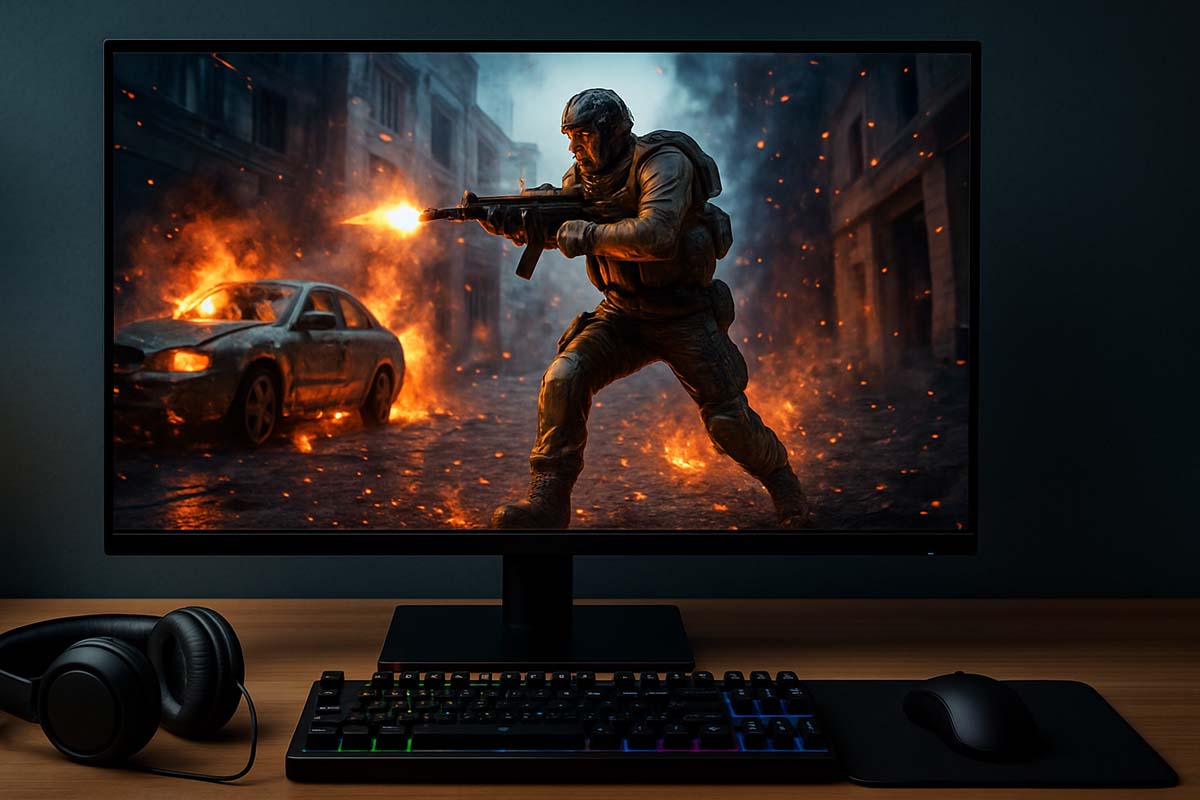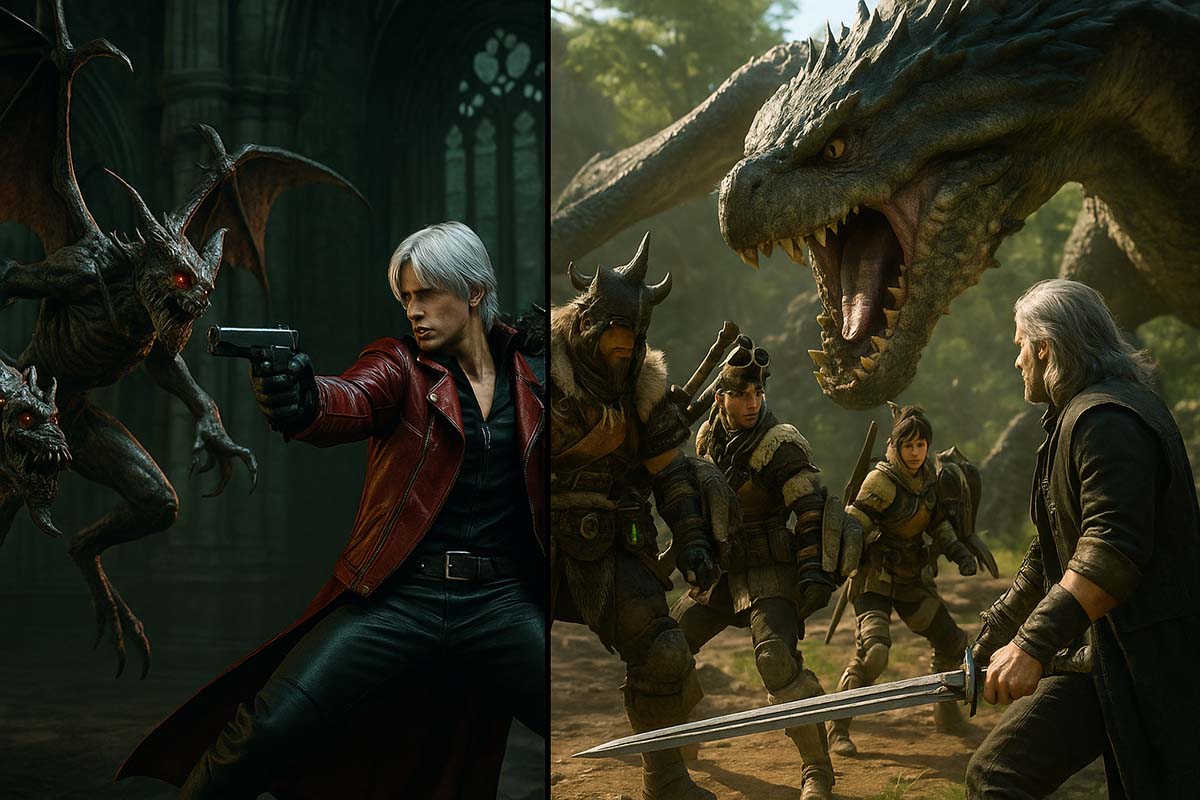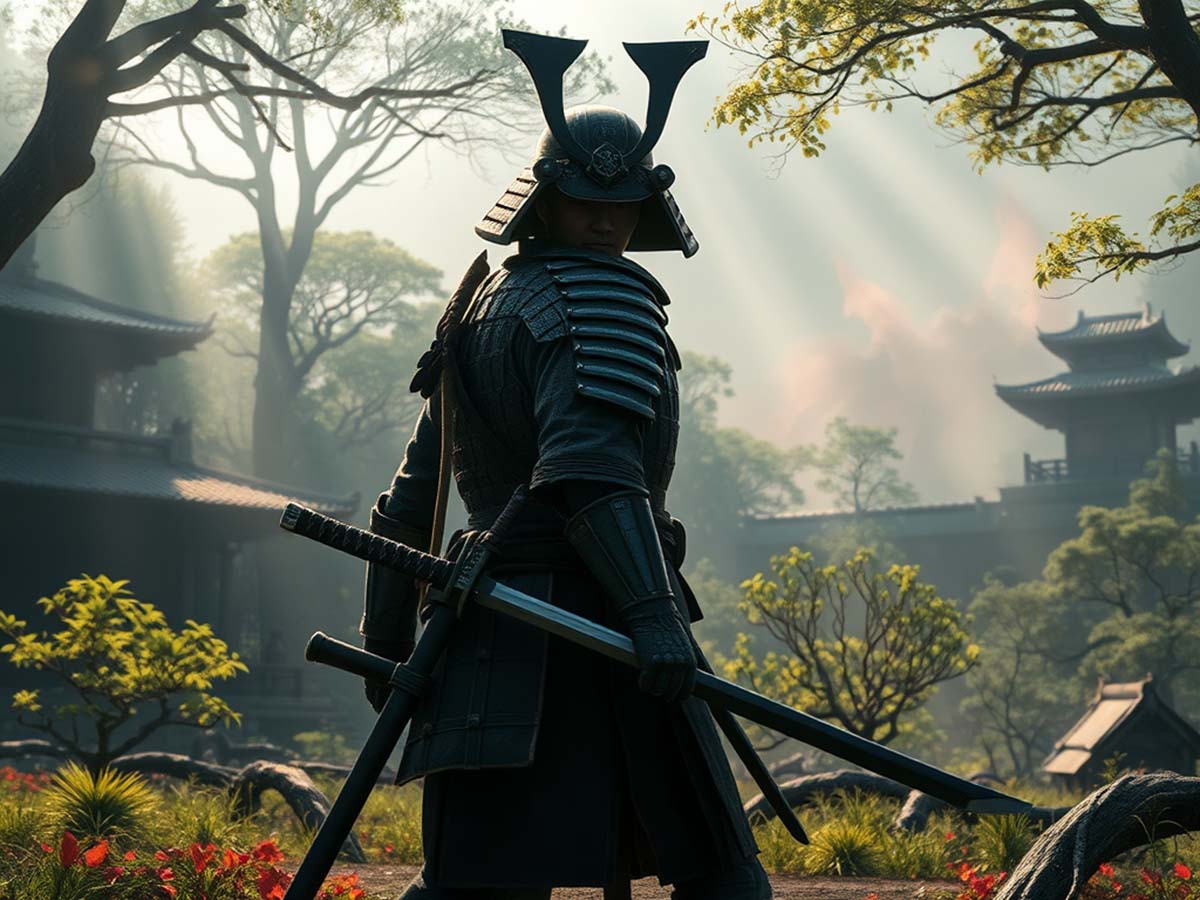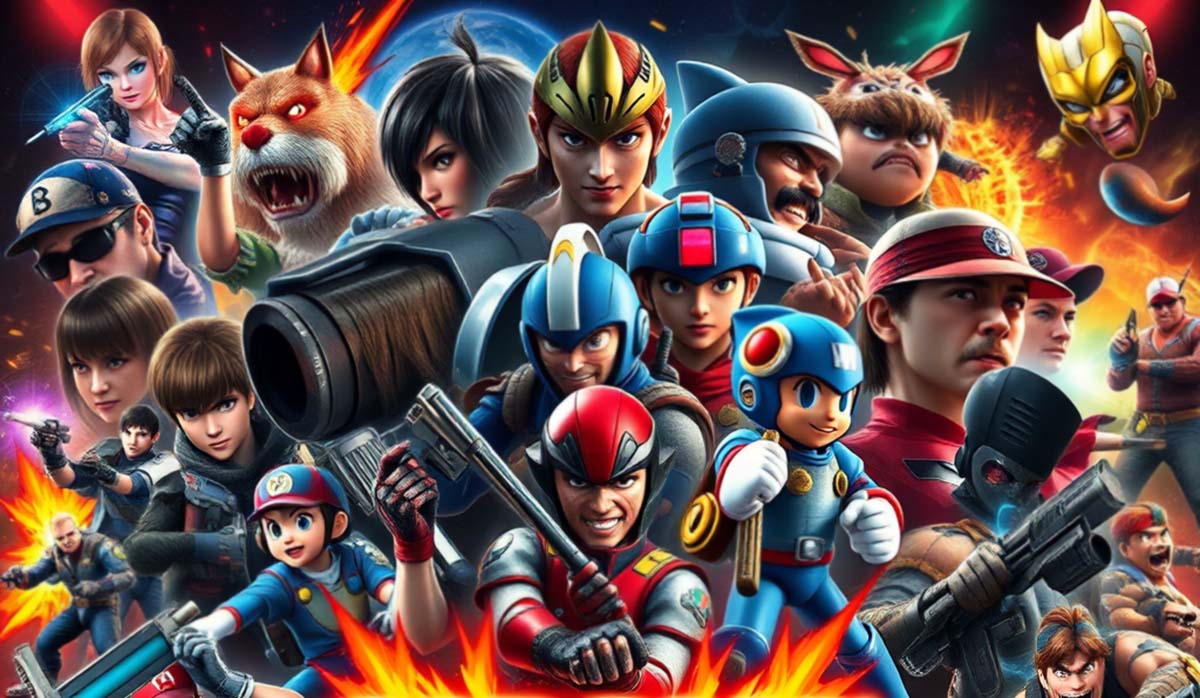The Power of Graphics in Action Games: A Global Perspective
When players enter the battlefield, the first thing that catches their eye is the light, shadows, and colors surrounding the characters. In action games, the heart of the experience lies in quick movements and rising tension. With strong visuals, players can feel the slash of a sword or the shock of an explosion around them. Whether you’re a content creator, e-sports organizer, or simply a gamer anticipating the next big release from Japan, the U.S., or Brazil—visuals are your first impression of quality. That’s why discussions often center on improving visual fidelity.
Today’s market demands more than just a gripping story or solid mechanics. Data from platforms like Steam and PlayStation Network shows that titles with impressive visual presentation tend to have better retention. Pre-order numbers confirm that stunning trailers with brilliant particle effects spark instant buzz. This drives constant competition among engine developers like Unreal Engine 5, Unity, and RE Engine to offer more immersive visual experiences across the globe.
Quick Take
* Graphics grab attention instantly and linger in a player’s memory long after the fight ends.
* Ray tracing, HDR, and smart upscaling define the pillars of modern visual technology.
* Global gamers now expect a consistent visual experience, regardless of hardware or internet speed.
Speed and Clarity: Keys to Success
A clear view of the situation is essential in any action scene. If the eyes hesitate, mechanics like parry timing or invincibility frames become unreliable. New fighting games benefit from 120 Hz displays that capture every punch in detail. Adding motion blur and impact sparks further enhances how each strike feels and boosts the excitement for viewers watching livestreams.
Fast visuals aren’t enough without clarity. Dynamic resolution plays a crucial role in maintaining smoothness during hectic moments by temporarily lowering internal render scales. In Asia-Pacific tournaments, maintaining a steady 60 fps is a must. A drop in frame rate is often seen as an unfair disadvantage. That’s why developers include backup settings—like low-latency mode or toggles that disable effects such as sun rays—to keep the gameplay flowing.
Technology in Focus: Ray Tracing, HDR, and Adaptive Shading
Ray tracing became a hot topic when NVIDIA revealed its RTX demo in 2018. But it wasn’t until 2023 that hybrid lighting became common in action games. Engines now use selective ray counts and screen-space techniques to strike a balance in rendering reflections, fog, and lighting. This allows for natural light diffusion inside a gothic cathedral or accurate reflections on a wet, futuristic street.
Along with lighting advances came improvements in color depth, thanks to HDR. Consoles like the PlayStation 5 and Xbox Series X support native tone-mapping pipelines to ensure consistent visual output—whether on an OLED screen in Seoul or an LED monitor in Mexico City. Mobile chipsets such as Apple’s A17 Pro and Qualcomm’s Snapdragon X Elite offer built-in acceleration for variable-rate shading. This reduces processing load on backgrounds and sharpens the focus on central enemies—even on smaller screens.
Emotion Through Visual Design
In fast-paced battles, visuals do more than just impress. Gustav, an animator from Sweden, shared during GDC 2024 that it’s tricky to guide a player’s eyes from the user interface to detailed models without disrupting gameplay. In the Resident Evil 4 remake, developers used sub-surface scattering on Leon’s skin to show cold rain and subtle fear. Monster Hunter World went a step further, layering procedural mud on Barroth’s body to make each head slam feel heavier.
Even indie games demonstrate this principle well. Hades II, still in its early build, receives praise for combining hand-painted 2D textures with 3D skeletal animation. Though it doesn’t match AAA polygon counts, its bold art direction leaves a lasting mark across social platforms. This proves that emotional depth doesn’t always require photorealism—just a thoughtful mix of color, lighting, and camera work.
Challenges in Optimization Across the World
Hardware conditions differ widely across the gaming community. In South Korea, gamers often use fiber internet and 144 Hz monitors. In India, where 5G is still rolling out, most rely on mid-range Android phones. Because of this, studios build scalable asset pipelines. Textures are grouped by resolution: 4K for high-end PCs, 2K for consoles, and 1K for mobile. Occlusion culling—supported by GPU counters—prevents unnecessary rendering of hidden elements. And with intelligent level-of-detail switching, distant objects don’t overload the system.
Capcom’s RE Engine is a good example of clever optimization. In Street Fighter 6, the “performance mode” loads simpler geometry for the background crowd without affecting core characters. This makes competitive play possible in areas like Latin America where internet bandwidth is more limited. The result? A fair match for players and a smooth experience for fans.
Learning from Major Franchises
At Tokyo Game Show 2024, Capcom showcased photorealistic feathers on Rathalos, created using deep-learning texture tools. In Devil May Cry 5: Special Edition, players embraced turbo mode as frame rates remained steady even with reflections. Director Hideaki Itsuno shared that aggressive checkerboard rendering helped simplify background loads while keeping characters at full resolution.
Meanwhile, Naughty Dog used deferred lighting in The Last of Us Part II to highlight translucent effects on wet grass. This improved the stealth feature by making rustling leaves easy to spot. In Europe, reviewers praised Hellblade II’s balance between style and technical polish. The use of real-time facial capture allowed players to feel every emotion on Senua’s face—bringing storytelling to life through both art and engineering.
Different Hardware, Different Demands
According to Statista, around 46% of global gaming revenue came from mobile platforms last year. That means PC-level visuals can’t be the only standard. Performance must also hold up on touchscreens. That’s where tile-based deferred rendering comes in, a technique common on iOS and Android. It divides the screen into tiles to reduce heat and memory strain.
High-end PC builds in places like Frankfurt use path tracing to show advanced reflections. These rigs draw up to 800 watts and rely on liquid cooling and robust power units. Some design teams even release separate texture packs or downloadable assets like <a href=”https://fastpng.com” target=”_blank”><strong>free PNG</strong></a> files for users with large SSDs. On the console side, 40 Hz modes are gaining popularity in PlayStation VR2. Combining motion interpolation with eye tracking helps maintain fidelity without making players feel dizzy.
Art Direction Versus Raw Power
Sometimes, a stylized approach works better. In The Legend of Zelda: Tears of the Kingdom, Nintendo chose cel-shading and ambient lighting to match the modest power of the Switch. Despite its lower specs, the vast open world and smooth animations attracted billions of hours of Twitch views. This shows that a cohesive artistic direction can be more meaningful than chasing realism that hardware can’t support.
Indie titles like Celeste and Dead Cells thrived using pixel art enhanced by modern lighting tricks. Their low production cost, quick updates, and easy scaling to browsers allowed diverse voices from countries like Ghana and Poland to enter the scene. What matters most is clarity of purpose and the visual storytelling that supports it.
Making Games More Inclusive
There’s growing demand for designs that welcome everyone. The World Health Organization estimates that over a billion people live with some form of disability. Flashy effects mean little if a player struggles to read the screen. That’s why God of War Ragnarök includes a high-contrast mode and horizon-based auto-aim. In Asia’s internet cafes, action RPGs are popular, so tools like text-to-speech are essential for gamers with vision challenges. Some studios label UI textures with metadata to support scaling on 4K televisions.
Costs and Environmental Considerations
More detailed graphics lead to longer rendering times. In 2024, electricity bills for a studio in Montreal rose 12% due to 8K texture baking. To offset this, publishers funded green server farms powered by hydroelectricity in Norway. In Southeast Asia, government grants support studios using clean-energy GPU clusters. These choices allow teams to pursue artistic goals without ignoring their environmental responsibility.
In the U.S., several publishers joined a group aiming for a net-zero rendering pipeline before the decade ends. Features like dynamic cloud scaling help shut down idle server nodes when not in use. In Singapore, one studio replaced fluorescent lighting with LED systems and installed heat-recovery air-conditioning to lower power consumption. These decisions show that creative ambition and environmental care can go hand-in-hand.
A growing trend is remote rendering. Heavy computing happens in data centers, while only compressed visual frames are streamed to homes. This setup removes the need for expensive GPUs and helps cut down on electronic waste. With broader adoption, the entire ecosystem could see a reduced carbon footprint.
Advantages and Challenges
- Immersion and Feedback — Detailed lighting and particle effects give immediate signals, such as whether a combo or block was successful.
- Stronger Replay Value — Beautiful visuals encourage players to try speedruns, photo-mode contests, and mods.
- Higher Production Costs — Staff count, research spending, and rendering needs all grow—leading to more expensive final products.
- Hardware Limitations — Not every country has access to advanced GPUs, so flexible settings are needed to welcome new markets.
In the end, graphics in action games are more than just screenshot material. They set the pace of combat, support strategy, and connect communities worldwide. Through the blending of art and technology, players—from e-sports arenas in Manila to home setups in Toronto—get to experience games on a deeper level. As hardware and software continue to improve, the richness of these experiences will only grow. Are you ready for the next wave of light and motion?



